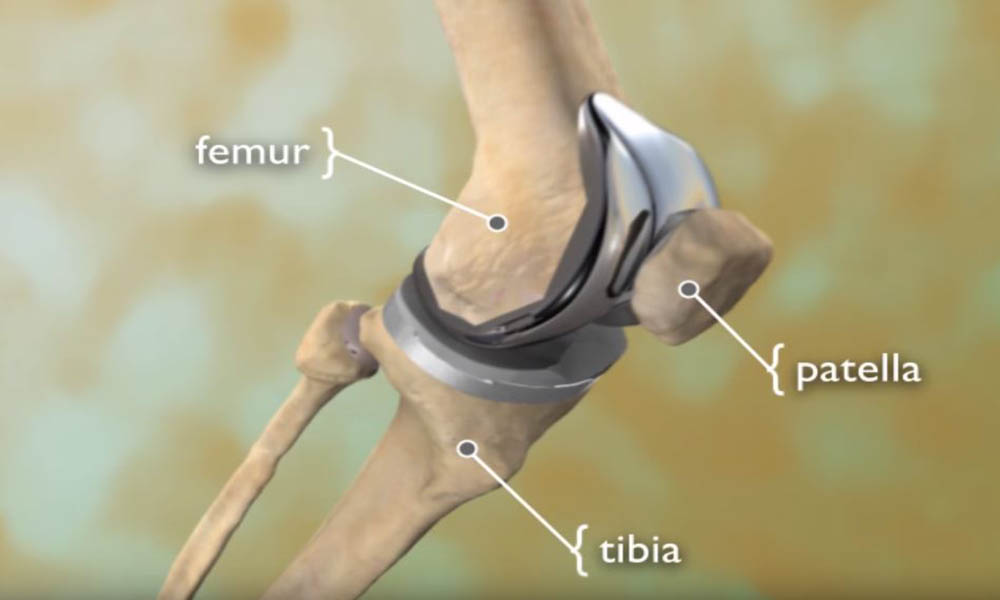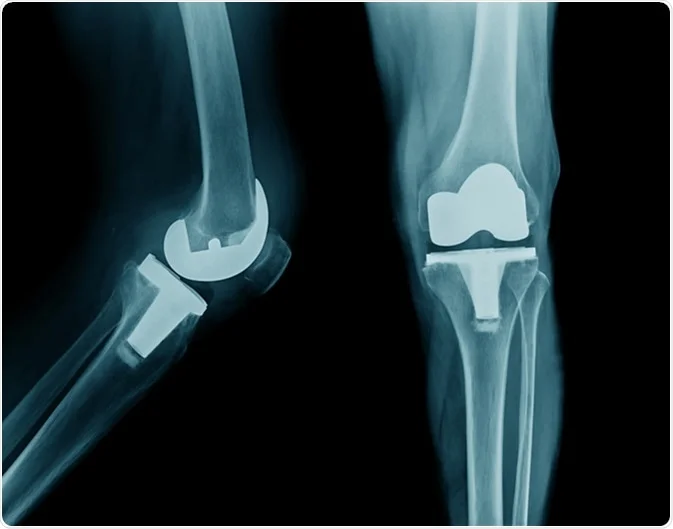Knee joint replacement is a surgical procedure designed to relieve pain and restore function in severely diseased knee joints. It involves removing damaged cartilage and bone from the knee and replacing it with an artificial joint. This article covers early diagnosis, precautions, treatment options, facilities, and success stories related to knee joint replacement.
Early Diagnosis of Knee Joint Issues
Early diagnosis is crucial for effective treatment of knee problems, particularly for conditions leading to joint replacement, such as osteoarthritis, rheumatoid arthritis, and traumatic injuries. Common early symptoms include persistent knee pain, swelling, stiffness, and difficulty in performing daily activities like walking or climbing stairs.
Diagnosis Methods
- Physical Examination: A thorough physical examination by an orthopedic surgeon helps assess pain levels, swelling, and range of motion.
- Imaging Tests: X-rays are commonly used to visualize the bone structure and detect any abnormalities. MRI scans provide detailed images of soft tissues, aiding in the diagnosis of ligament tears or cartilage damage.
- Laboratory Tests: Blood tests can help identify underlying conditions like rheumatoid arthritis, which can affect treatment decisions.
Prompt diagnosis allows for early intervention, which may include lifestyle changes, physical therapy, or medications to delay the need for surgery.
Precautions Before Knee Joint Replacement
Before undergoing knee joint replacement surgery, patients must take several precautions to ensure a successful outcome:
1. Pre-Operative Assessment
A comprehensive pre-operative assessment includes reviewing the patient’s medical history, medications, and any existing health conditions.
2. Physical Conditioning
Engaging in physical therapy prior to surgery can strengthen the muscles around the knee, improving recovery speed post-surgery.
3. Weight Management
Maintaining a healthy weight can reduce stress on the knee joint and enhance surgical outcomes. Patients are encouraged to follow a balanced diet and engage in low-impact exercises.
4. Medication Review
Certain medications, especially blood thinners, must be adjusted or stopped before surgery to minimize the risk of excessive bleeding.
5. Lifestyle Adjustments
Quitting smoking and reducing alcohol consumption can significantly improve surgical outcomes and promote faster recovery.
Treatment Options for Knee Joint Issues
Treatment for knee problems varies depending on the severity and underlying cause. Options include:
1. Non-Surgical Treatments
- Physical Therapy: A personalized physical therapy regimen can improve mobility and strength, potentially delaying the need for surgery.
- Medications: Over-the-counter pain relievers, anti-inflammatory medications, and corticosteroid injections can help manage pain and swelling.
- Assistive Devices: Braces and orthotics may provide support and alleviate pressure on the knee joint.
2. Surgical Treatments
When conservative treatments fail, surgical options may include:
- Arthroscopy: A minimally invasive procedure used to diagnose and treat joint issues through small incisions.
- Osteotomy: Realigning the bones to relieve pressure on the knee joint.
- Knee Joint Replacement: This may involve partial or total replacement depending on the extent of damage.
Facilities for Knee Joint Replacement

Choosing the right facility for knee joint replacement is critical for ensuring successful outcomes. The following aspects are essential to consider:
1. Accreditation and Certification
Select a facility accredited by recognized healthcare organizations, ensuring it meets high standards of care.
2. Experienced Surgeons
Research the credentials and experience of the orthopedic surgeons specializing in knee replacements. Look for surgeons with a high volume of successful procedures.
3. Rehabilitation Services
Post-surgical rehabilitation is vital for recovery. Facilities that offer comprehensive physical therapy services can significantly enhance the recovery process.
4. Advanced Technology
Look for centers that utilize the latest technology in surgical techniques and imaging, such as robotic-assisted surgeries, which may improve precision and recovery times.
5. Patient Reviews and Success Rates
Research patient testimonials and success rates of the facility. High satisfaction rates often indicate better outcomes.
The Best Teams in the World for Knee Joint Replacement

Several renowned medical institutions and surgical teams are recognized globally for their excellence in knee joint replacement:
1. Mayo Clinic (USA)
Mayo Clinic is frequently ranked among the top hospitals for orthopedic care, known for its multidisciplinary approach and advanced surgical techniques.
2. Cleveland Clinic (USA)
Cleveland Clinic offers cutting-edge treatments and has a team of highly experienced orthopedic surgeons specializing in joint replacements.
3. Charité – Universitätsmedizin Berlin (Germany)
This facility is known for its innovative approaches and research in orthopedic surgery, making it a leading choice in Europe.
4. Singapore General Hospital (Singapore)
With advanced medical technology and experienced surgeons, Singapore General Hospital provides comprehensive orthopedic care.
5. The Royal National Orthopaedic Hospital (UK)
The UK’s largest orthopedic hospital, it offers specialized services in knee replacement surgery, renowned for research and patient care.
Success Stories of Knee Joint Replacement

Many patients have experienced life-changing improvements after knee joint replacement surgeries. Here are a few inspirational stories:
1. Jane’s Journey
At 65, Jane struggled with debilitating knee pain that limited her mobility. After undergoing total knee replacement, she not only regained her ability to walk without pain but also resumed hiking, something she thought she’d never do again.
2. Mark’s Transformation
Mark, a 52-year-old avid golfer, faced severe arthritis in his knee. After a partial knee replacement, he was back on the golf course within three months, enjoying the game he loves without discomfort.
3. Linda’s New Lease on Life
After years of suffering from osteoarthritis, Linda underwent knee joint replacement at a top facility. Today, she shares her story to inspire others, emphasizing that a successful surgery can bring renewed joy and activity to life.
Conclusion
Knee joint replacement is a life-altering procedure for those suffering from chronic knee pain. Early diagnosis, proper precautions, and choosing the right treatment facility can lead to successful outcomes. With advancements in surgical techniques and rehabilitation, patients can look forward to a more active and pain-free life. Whether it’s climbing stairs, playing sports, or simply walking, knee joint replacement has the potential to restore functionality and enhance quality of life.


